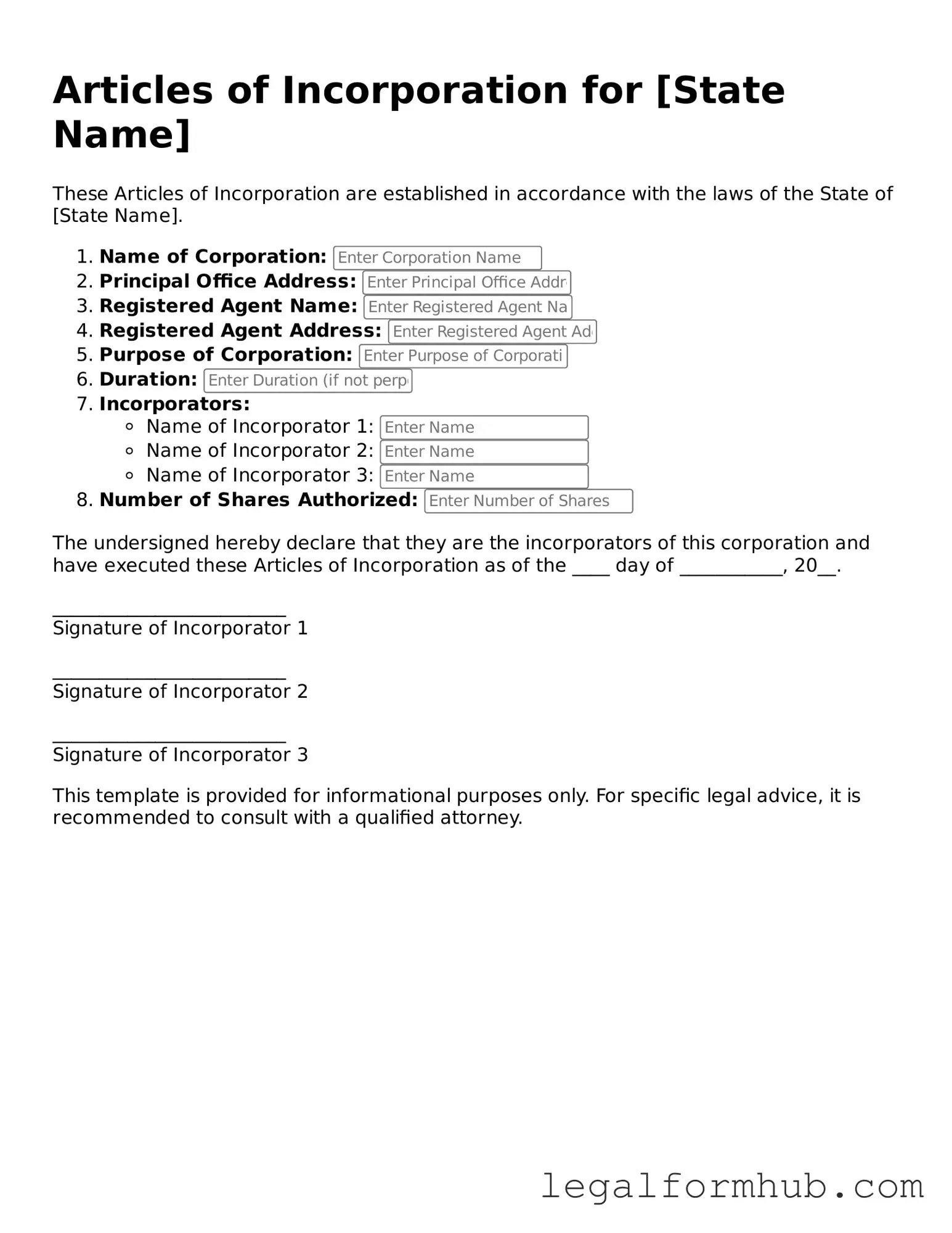The Articles of Incorporation are often compared to the Certificate of Incorporation. Both documents serve as foundational legal paperwork that officially establishes a corporation. The Certificate of Incorporation typically includes similar information, such as the corporation's name, purpose, and details about its stock. While the terminology may differ from state to state, the function remains the same: to create a distinct legal entity recognized by the state.
The Bylaws are another document that parallels the Articles of Incorporation. Bylaws outline the internal rules and procedures for managing the corporation. While the Articles provide a high-level overview of the corporation's existence, Bylaws delve into the specifics of governance, including the roles of officers, the process for holding meetings, and how decisions are made. Both documents are essential for the corporation's operation but serve different purposes.
The Operating Agreement is similar to the Articles of Incorporation, particularly for Limited Liability Companies (LLCs). This document outlines the management structure and operating procedures of the LLC. Like the Articles, the Operating Agreement is crucial for defining the entity's legal standing and operational framework. It provides clarity on ownership interests and responsibilities, ensuring that all members understand their roles.
The Partnership Agreement shares similarities with the Articles of Incorporation, especially when establishing a partnership. This document details the rights and responsibilities of each partner, including profit-sharing arrangements and decision-making processes. While the Articles create a corporation, the Partnership Agreement formalizes a business relationship among individuals, highlighting the legal obligations that bind them together.
The Certificate of Good Standing is another document that relates to the Articles of Incorporation. While the Articles are filed to create a corporation, the Certificate of Good Standing is a state-issued document that confirms the corporation is legally registered and compliant with state requirements. It serves as proof that the corporation has fulfilled its obligations, such as filing annual reports and paying taxes, which is essential for maintaining its legal status.
The Business License is akin to the Articles of Incorporation in that both are necessary for legal operation. While the Articles establish the corporation, the Business License grants permission to operate within a specific jurisdiction. This document ensures that the business complies with local regulations and zoning laws, allowing it to function legally in its chosen market.
To facilitate the transfer of boat ownership in California, it's essential to utilize the appropriate documentation, such as the California Boat Bill of Sale form. This form formalizes the transaction, ensuring that both the buyer and seller have clear, recorded details regarding the ownership transfer. For those looking to streamline this process, you can easily access the necessary documentation through Fill PDF Forms, ensuring a comprehensive and compliant transaction.
The Employer Identification Number (EIN) is similar to the Articles of Incorporation in that it is a critical step for businesses seeking to operate legally. The EIN is issued by the IRS and is used for tax purposes. While the Articles create the corporation, the EIN allows it to open bank accounts, hire employees, and file taxes. Both documents are essential for the legal and financial identity of the business.
The Shareholder Agreement can also be compared to the Articles of Incorporation. This document outlines the rights and responsibilities of shareholders within the corporation. While the Articles of Incorporation establish the corporation's existence, the Shareholder Agreement governs the relationship among shareholders, detailing voting rights, transfer of shares, and dispute resolution. Both documents are vital for ensuring smooth operations and clear communication among stakeholders.
Finally, the Annual Report is similar to the Articles of Incorporation in that it is a required document for corporations. While the Articles are filed at the inception of the corporation, the Annual Report must be submitted periodically to maintain good standing. This report provides updated information about the corporation's activities, financial status, and changes in management. Both documents are essential for regulatory compliance and transparency in business operations.
